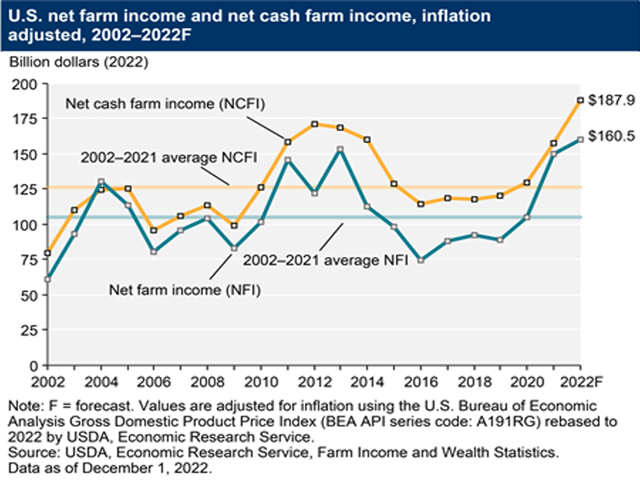Todd's Take
Confusing Price With Value Is a Common, Sad Mistake
It usually takes a lot to get me riled up, but I read something the other day that really set me off. I was skimming an opinion piece in Reuters about how the Democratic Party was going to start their primaries with a state other than Iowa. The political stuff didn't bother me, but in the process of explaining how the decision would hurt corn farmers and ethanol producers, the piece said, "While the farm industry directly contributes just 0.6% of GDP and 1.4% of U.S. jobs, national politicians courted the industry in Iowa to demonstrate they could win support in rural America"
(see https://www.reuters.com/…).
The part that set me off was the line that farmers contribute "just 0.6% of GDP." Flames burst out of my head as I tried to research where someone would have gotten a number like that. In a few minutes, DTN Digital Manager Chris Hill and I discovered a couple of likely sources.
Net farm income totaled $160.5 billion in 2022. Nominal GDP in the third quarter of 2022 totaled $25.72 trillion. As best as I can tell, the writer confused what farmers contribute with the amount of money farmers make, and the math came out to 0.6% of GDP.
To be fair, the author did not come out and say farmers aren't important, but it is difficult to read farmers contribute "just 0.6% of GDP" and not get the impression that they're being slighted. After all, how important can 0.6% be?
P[L1] D[0x0] M[300x250] OOP[F] ADUNIT[] T[]
As I stewed, I realized it overlapped with another festering irritation that bothered me through much of 2022 -- the economic fear-mongering we've been getting from much of the business news.
The Federal Reserve raised the federal funds rate target seven times in 2022, from near zero to an upper limit of 4.5%, and more rate hikes are expected ahead. In that same time, domestic crude oil production has barely risen, from 11.8 million barrels per day to 12.2 million barrels per day, meaning that the primary source of rising prices in the economy has not been addressed.
If we listen to the steady drumbeat of recession talk in the news, we would think the sky is falling, but the numbers say otherwise and those of us that have lived through times of much higher interest rates know better. Nominal GDP in the third quarter of 2022 was up to $25.72 trillion, 9.2% higher than a year ago. On Friday, Jan. 6, the Labor Department reported 159.2 million people at work in the U.S. in December, the highest number on record and the first time employment has exceeded the pre-pandemic peak of 158.75 million. The U.S. economy just recovered from the largest workforce disruption since the Great Depression and all we heard in the first week of 2023 was how bad the economy of 2023 is going to be. Several times in the past year, the bearish mantra scared not-so-bright traders out of the long side of the corn and soybean markets.
Much like the misguided Reuters article referred to above, many have trouble distinguishing what's important from what's popular. The Fed has made life uncomfortable for some that rely on credit, but it's not the end of the world. Not only are more people working than ever before, but they're also eating, sometimes more than once a day.
One thing many seem to have trouble understanding is that price and value are not the same. The amount of money something costs or someone makes in life doesn't tell you anything about the value of the item or the person. If you really want to know what someone is worth, consider what life would be like if they were gone.
On this planet, the healthiest human body can go without food for 30 or maybe 40 days. If you don't think farmers or ranchers are important because net farm income "only" amounts to 0.6% of the nation's GDP, pause and think about how the world would function without the contributions farmers make. The answer is it couldn't.
Much like those who serve in the military, in healthcare and in education, many of the people that produce our food may not make the Forbes 400 list, but the rest of us couldn't function without them. If that's not important enough to deserve political attention or any other form of appreciation, I don't know what is.
**
Comments above are for educational purposes only and are not meant as specific trade recommendations. The buying and selling of grain or grain futures or options involve substantial risk and are not suitable for everyone.
Todd Hultman can be reached at Todd.Hultman@dtn.com
Follow him on Twitter @ToddHultman1
(c) Copyright 2023 DTN, LLC. All rights reserved.




